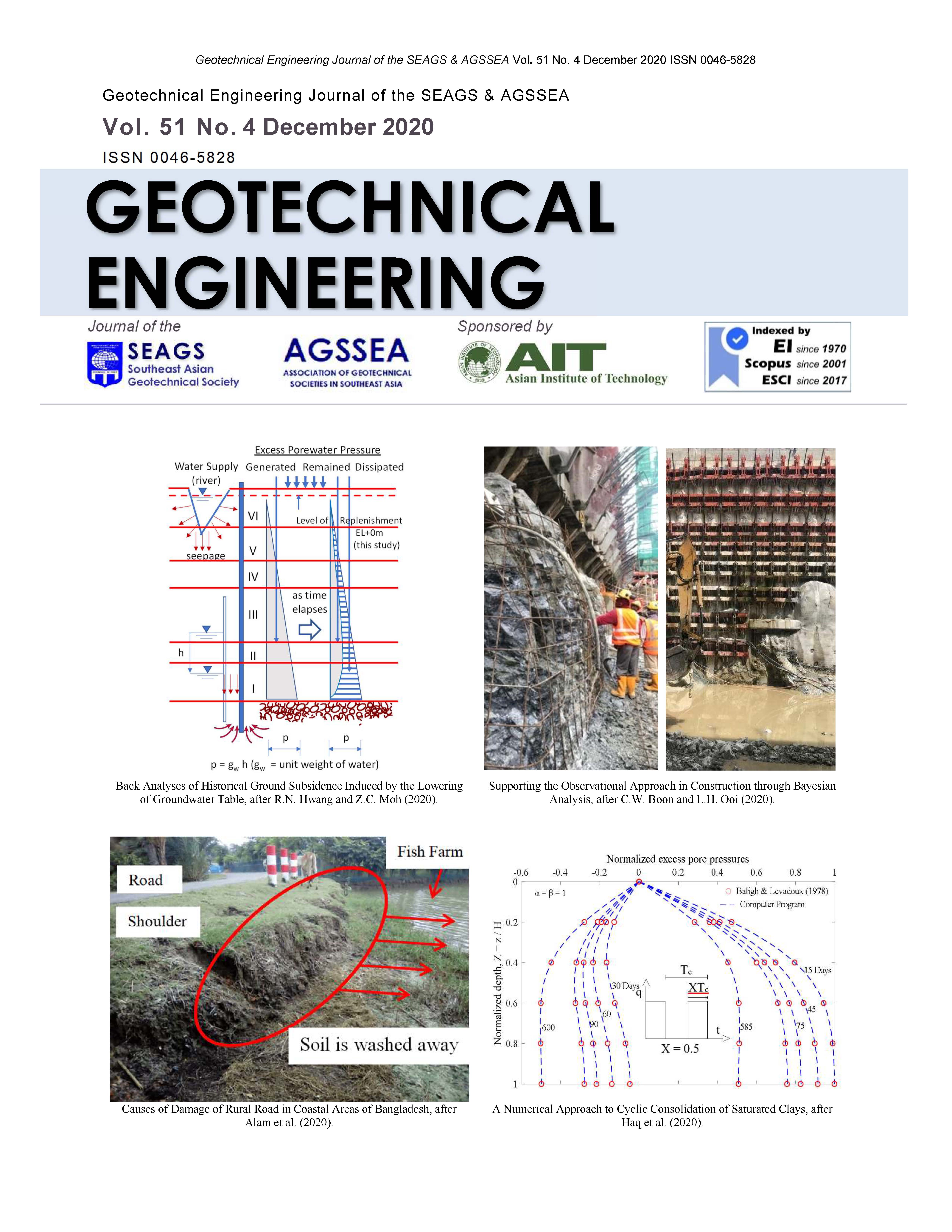Tunisian Phosphogypsum Challenges
Main Article Content
Abstract
The accumulation of phosphogypsum (PG) produced till 2015 makes its management a real challenge to the Tunisian authorities and put the Tunisian Chemical Group (TCG) to face a challenge at large scale as the specified storage embankments knew considerable extensions in terms of heights and areas. Several studies were elaborated subsequently in 2007, 2012 and 2013 to focus on the stability of Sfax and Skhira PG embankments’ and showed two different chemical and mechanical behaviours according to the experienced deposition process. In 2012, it was revealed that the wet PG embankment of Sfax City with 56m height, 53Ha area and 32° slope can attain 70m maximum height. This embankment can reach 100m in height if a reinforcement technique will be used. This deposition process is well recommended to ensure a better interaction between the embankment and the existing ground surface. Using the dry deposited process, the area of the PG embankment of Skhira City covers 112Ha and presents two elevation levels of 25m and 55m in 2013. However, the dry deposited process results in a damaged embankment profile, significant settlements and lateral displacements. Therefore, a PG embankment of 100m height cannot be targeted. A reinforcement of the embankment by High Density Polyethylene geotextile (HDPE) layers at increments of 4m from 55m elevation allows reaching 130m of height. Comparative study was raised between the wet and the dry process and resulted in favour of the wet process from both industrial and geotechnical perspectives. Thus, the TCG expects turning all its deposition processes to the wet one. A characterization of Tunisian Phosphogypsum was carried out based on the previous studies performed on Phosphogypsum embankments of Sfax and Skhira Cities and on the experimental tests performed on dry deposited Phosphogypsum...
Article Details

This work is licensed under a Creative Commons Attribution-NonCommercial-NoDerivatives 4.0 International License.
Copyright © 2019 Association of Geotechnical Societies in Southeast Asia (AGSSEA) - Southeast Asian Geotechnical Society (SEAGS).


